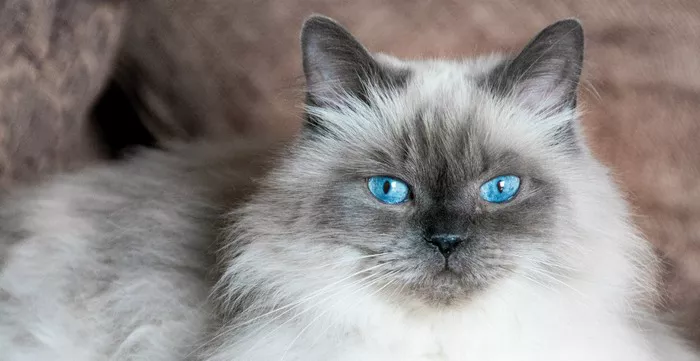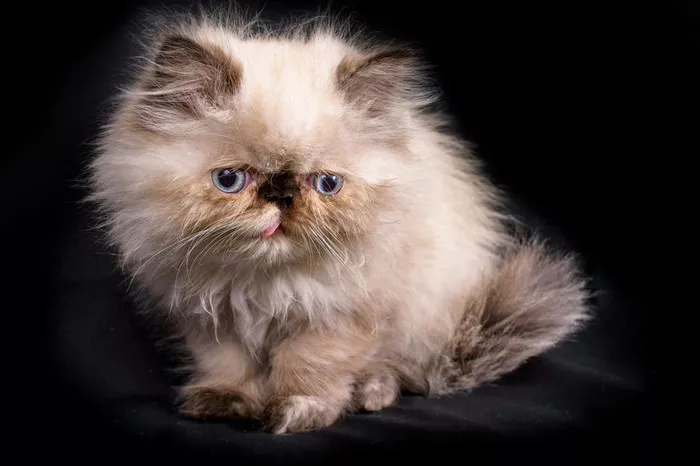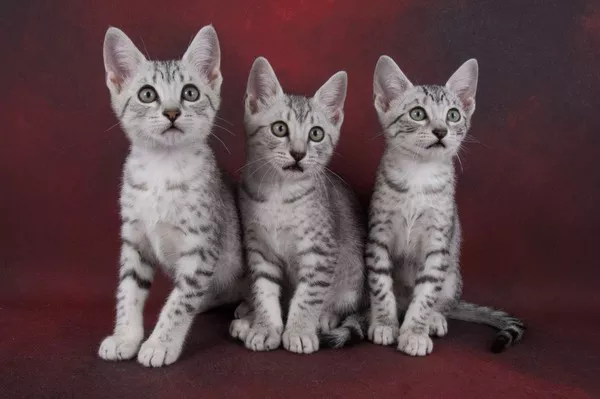Himalayan cats, with their striking appearance and captivating blue eyes, have long been admired and cherished by cat enthusiasts around the world. Renowned for their unique coloration and distinct features, Himalayans possess a charm and elegance that sets them apart from other breeds. Among the most striking characteristics of Himalayan cats are their piercing blue eyes, which add to their allure and mystique. In this article, we delve into the fascinating world of Himalayan cats, unraveling the mystery behind their mesmerizing blue eyes.
Understanding Himalayan Cats
Before exploring the reasons behind Himalayan cats’ blue eyes, it’s essential to understand the breed’s origins and distinctive traits.
Breed Origins: Himalayan cats are a crossbreed between Persian and Siamese cats, resulting in a combination of features from both parent breeds. They inherit the luxurious long fur and distinctive facial structure of Persians, as well as the striking color points and blue eyes characteristic of Siamese cats.
Distinctive Features: Himalayan cats are known for their large, expressive eyes, broad heads, and flat faces. Their coat coloration typically features darker points on the ears, face, paws, and tail, with a lighter body coloration.
The Genetics of Blue Eyes
Blue eyes in cats, including Himalayans, are the result of a combination of genetic factors that influence eye coloration. Understanding the genetics behind blue eyes can provide insight into why Himalayan cats exhibit this distinctive trait.
OCA2 Gene: The OCA2 gene, also known as the Oculocutaneous Albinism II gene, plays a crucial role in determining eye color in cats. This gene regulates the production of melanin, the pigment responsible for the coloration of the eyes, skin, and hair.
Melanin Production: Cats with blue eyes possess a reduced amount of melanin in the iris of their eyes. This reduction in melanin leads to the scattering of light within the eye, resulting in the appearance of blue coloration.
Tyrosinase Gene: Another gene involved in eye coloration is the tyrosinase gene, which regulates the production of melanin in the eyes. Mutations in this gene can affect the amount and distribution of melanin, leading to variations in eye color.
The Role of Color Points
One of the defining characteristics of Himalayan cats is their color points, which contrast sharply with the lighter body coloration. The presence of color points is closely linked to the expression of blue eyes in Himalayan cats.
Temperature-Sensitive Pigmentation: The color points on Himalayan cats result from temperature-sensitive pigmentation, a phenomenon known as Himalayan coloration or “point coloration.” Cooler areas of the body, such as the ears, face, paws, and tail, exhibit darker pigmentation due to the influence of temperature on melanin production.
Development of Blue Eyes: The genes responsible for color point pigmentation also influence the development of blue eyes in Himalayan cats. The same genetic factors that produce darker points on the body also contribute to the reduction of melanin in the iris, resulting in blue eye coloration.
Environmental Influences
While genetics play a significant role in determining eye color in Himalayan cats, environmental factors can also impact the expression of blue eyes.
Temperature Sensitivity: The development of color points and blue eyes in Himalayan cats is influenced by environmental temperature. Cooler temperatures promote the expression of darker pigmentation in the color points, as well as the development of blue eyes.
Seasonal Variation: Himalayan cats may exhibit variations in coat coloration and eye color throughout the year, with changes in temperature and sunlight affecting the intensity of their color points and the appearance of their eyes.
Breed Standards and Recognition
In the world of cat breeding and showing, Himalayan cats are recognized for their distinctive coloration, including their striking blue eyes. Breed standards established by cat associations such as The International Cat Association (TICA) and the Cat Fanciers’ Association (CFA) specify the desired characteristics for Himalayan cats, including their coat coloration and eye color.
Breed Recognition: Himalayan cats are recognized as a distinct breed by major cat associations, with specific guidelines outlining the desired traits for show-quality specimens. Blue eyes are considered a desirable trait in Himalayan cats and are often emphasized in breed standards.
Conclusion
In conclusion, the mesmerizing blue eyes of Himalayan cats are a result of a combination of genetic factors, including the expression of the OCA2 and tyrosinase genes, as well as temperature-sensitive pigmentation. The interaction of these genetic factors, along with environmental influences such as temperature sensitivity, leads to the development of blue eye coloration in Himalayan cats.
As one of the most distinctive features of the breed, the blue eyes of Himalayan cats contribute to their charm, elegance, and allure. Whether admired for their striking appearance in the show ring or cherished as beloved companions in the home, Himalayan cats continue to captivate cat lovers around the world with their enchanting blue eyes and unique beauty.


























